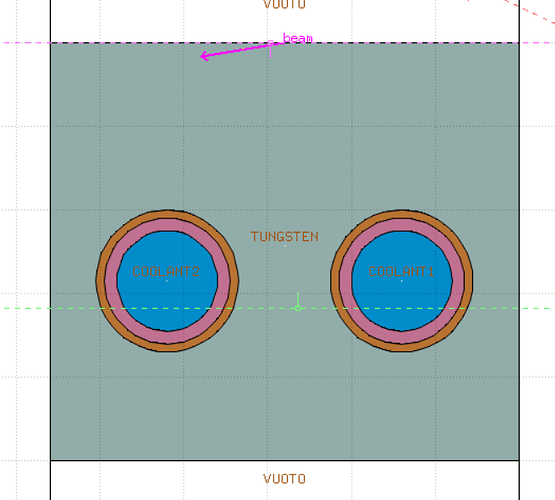DEMO_100ms.flair (3.8 KB)
source_newgen.f (20.8 KB)
distribution1_100ms.txt (3.2 KB)
Dear FLUKA experts,
I’m a beginner user whose recently approached the FLUKA code to model Runaway Electrons impact on wall tiles regarding fusion reactors. My simulation seems to work correctly, but I have some questions to which I couldn’t find an answer:
- As you can see, I defined the electron beam by imposing the coordinates of the point where it should impinge, is it right or is it an error? Because I feel that the tracking of the beam starts on the surface of my geometry, while in my thinking it should start outside.
- Is there the possibility to define “half-bodies”? I try to make myself clearer: since my geometry is periodic, is it possible to build it in the flair interface from the center of one coolant channel to the center of the other one, leaving two “half cylinders”?
- When particles are tracked inside the material, how it is defined the computational grid-mesh on which the interactions are scored? Is it uniform or can it be refined for example where the beam impinges?
I’m sorry if these might be dumb questions, but I hope that they might help some beginner user like me too. In the attachments I also leave the simuation case with associated files (source routine and file needed for it). I wish you all a good day
Kind regards
Matteo Robaldo
